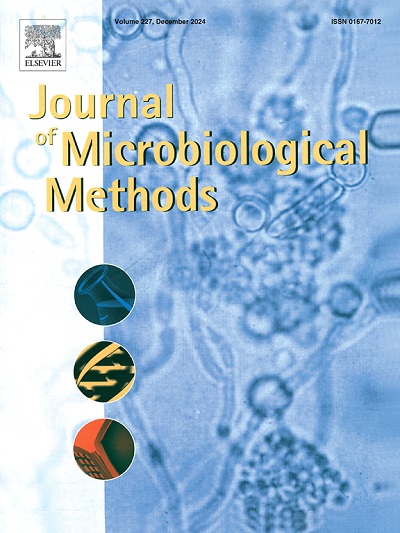利用病理图像和人工智能识别细菌感染及其类型
IF 1.9
4区 生物学
Q4 BIOCHEMICAL RESEARCH METHODS
引用次数: 0
摘要
细菌感染引起了重大的生物安全问题,因此早期准确诊断对于有效治疗和预后至关重要。传统的诊断方法虽然可靠,但往往速度慢,不能满足迫切的临床需求。相比之下,新兴技术提供了更高的效率,但往往成本高昂且难以获得。在这项研究中,我们利用容易获得的病理图像来诊断细菌感染。我们的初步研究结果表明,在没有死后现象的情况下,病理图像的显微镜检查可以确认细菌感染的存在。然而,由于病理变化的相似性,区分不同类型的细菌感染仍然具有挑战性。为了解决这一限制,我们应用了一种计算病理学方法,将病理图像与人工智能(AI)算法相结合。我们的模型在斑块水平和整个幻灯片图像(WSI)水平上对细菌感染进行分类。结果显示了强大的性能,在训练、测试和外部验证数据集上,总体AUC始终高于0.950,表明了较高的准确性、鲁棒性和泛化性。这项研究突出了人工智能在识别细菌感染类型方面的潜力,并为临床诊断提供了宝贵的技术支持,为更快、更精确的感染管理铺平了道路。本文章由计算机程序翻译,如有差异,请以英文原文为准。

Using pathology images and artificial intelligence to identify bacterial infections and their types
Bacterial infections pose a significant biosafety concern, making early and accurate diagnosis essential for effective treatment and prognosis. Traditional diagnostic methods, while reliable, are often slow and fail to meet urgent clinical demands. In contrast, emerging technologies offer greater efficiency but are often costly and inaccessible. In this study, we utilized easily accessible pathology images to diagnose bacterial infections. Our initial findings indicate that, in the absence of postmortem phenomena, microscopic examination of pathological images can confirm the presence of a bacterial infection. However, distinguishing between different types of bacterial infections remains challenging due to similarities in pathological changes. To address this limitation, we applied a computational pathology approach by integrating pathology images with artificial intelligence (AI) algorithms. Our model classified bacterial infections at both the patch-level and whole slide image (WSI)-level. The results demonstrated strong performance, with an overall AUC consistently above 0.950 across training, testing, and external validation datasets, indicating high accuracy, robustness, and generalizability. This study highlights AI's potential in identifying bacterial infection types and provides valuable technical support for clinical diagnostics, paving the way for faster and more precise infection management.
求助全文
通过发布文献求助,成功后即可免费获取论文全文。
去求助
来源期刊

Journal of microbiological methods
生物-生化研究方法
CiteScore
4.30
自引率
4.50%
发文量
151
审稿时长
29 days
期刊介绍:
The Journal of Microbiological Methods publishes scholarly and original articles, notes and review articles. These articles must include novel and/or state-of-the-art methods, or significant improvements to existing methods. Novel and innovative applications of current methods that are validated and useful will also be published. JMM strives for scholarship, innovation and excellence. This demands scientific rigour, the best available methods and technologies, correctly replicated experiments/tests, the inclusion of proper controls, calibrations, and the correct statistical analysis. The presentation of the data must support the interpretation of the method/approach.
All aspects of microbiology are covered, except virology. These include agricultural microbiology, applied and environmental microbiology, bioassays, bioinformatics, biotechnology, biochemical microbiology, clinical microbiology, diagnostics, food monitoring and quality control microbiology, microbial genetics and genomics, geomicrobiology, microbiome methods regardless of habitat, high through-put sequencing methods and analysis, microbial pathogenesis and host responses, metabolomics, metagenomics, metaproteomics, microbial ecology and diversity, microbial physiology, microbial ultra-structure, microscopic and imaging methods, molecular microbiology, mycology, novel mathematical microbiology and modelling, parasitology, plant-microbe interactions, protein markers/profiles, proteomics, pyrosequencing, public health microbiology, radioisotopes applied to microbiology, robotics applied to microbiological methods,rumen microbiology, microbiological methods for space missions and extreme environments, sampling methods and samplers, soil and sediment microbiology, transcriptomics, veterinary microbiology, sero-diagnostics and typing/identification.
 求助内容:
求助内容: 应助结果提醒方式:
应助结果提醒方式:


